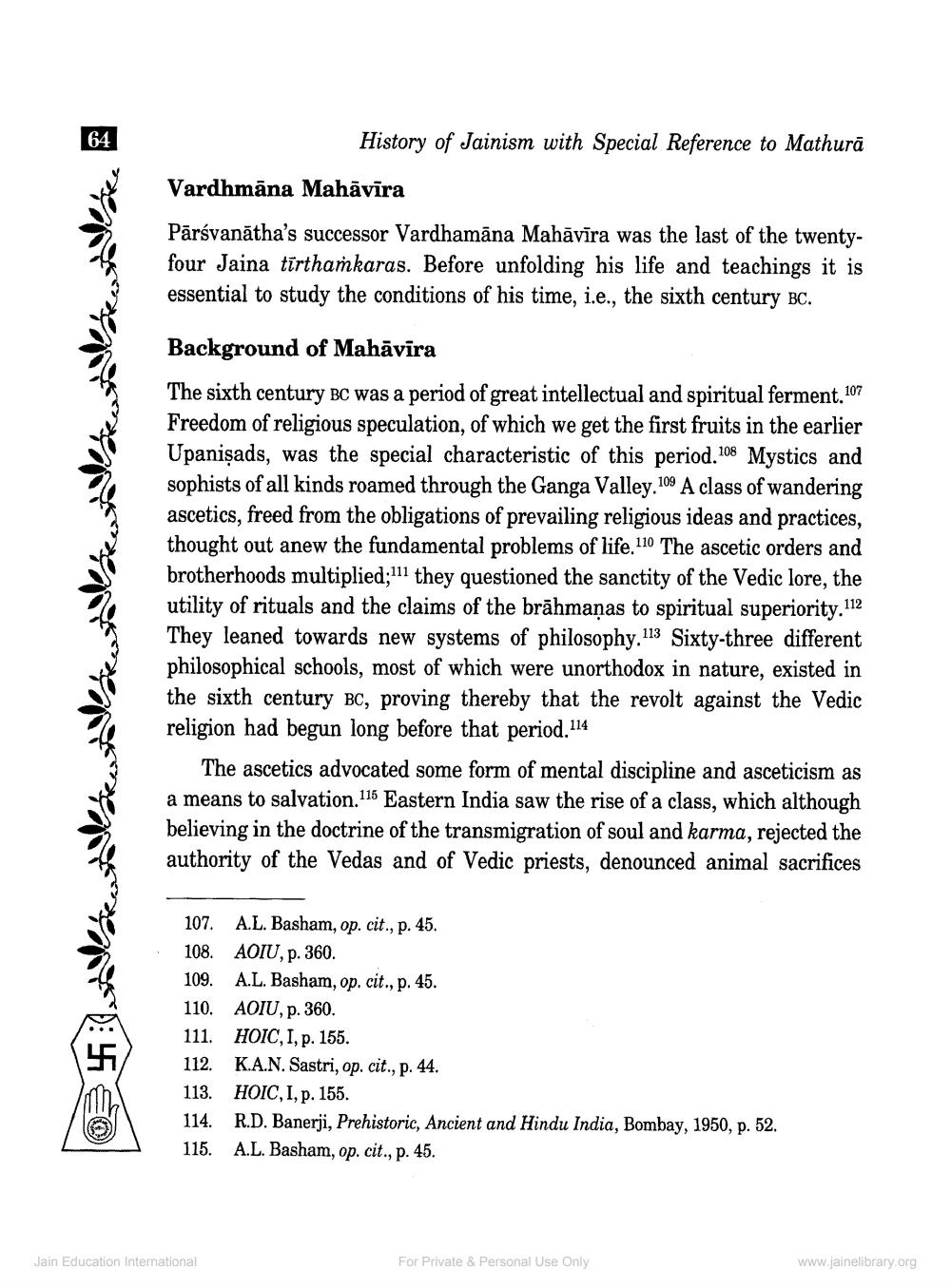________________
History of Jainism with Special Reference to Mathurā
Vardhmāna Mahāvīra
Pārsvanātha's successor Vardhamāna Mahāvīra was the last of the twentyfour Jaina tīrthařkaras. Before unfolding his life and teachings it is essential to study the conditions of his time, i.e., the sixth century BC
Background of Mahāvīra
The sixth century BC was a period of great intellectual and spiritual ferment.107 Freedom of religious speculation, of which we get the first fruits in the earlier Upanişads, was the special characteristic of this period. 108 Mystics and sophists of all kinds roamed through the Ganga Valley. 109 A class of wandering ascetics, freed from the obligations of prevailing religious ideas and practices, thought out anew the fundamental problems of life.110 The ascetic orders and brotherhoods multiplied;111 they questioned the sanctity of the Vedic lore, the utility of rituals and the claims of the brāhmaṇas to spiritual superiority. 112 They leaned towards new systems of philosophy.113 Sixty-three different philosophical schools, most of which were unorthodox in nature, existed in the sixth century BC, proving thereby that the revolt against the Vedic religion had begun long before that period. 114
The ascetics advocated some form of mental discipline and asceticism as a means to salvation.115 Eastern India saw the rise of a class, which although believing in the doctrine of the transmigration of soul and karma, rejected the authority of the Vedas and of Vedic priests, denounced animal sacrifices
107. A.L. Basham, op. cit., p. 45. 108. AOIU, p. 360. 109. A.L. Basham, op. cit., p. 45. 110. AOIU, p. 360. 111. HOIC, I, p. 155. 112. K.A.N. Sastri, op. cit., p. 44. 113. HOIC, I, p. 155. 114. R.D. Banerji, Prehistoric, Ancient and Hindu India, Bombay, 1950, p. 52. 115. A.L. Basham, op. cit., p. 45.
Jain Education International
For Private & Personal Use Only
www.jainelibrary.org




